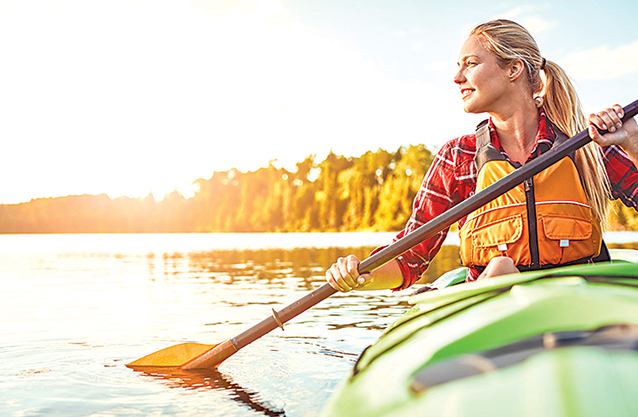Kayaking is a fun way to spend an afternoon, particularly in the summertime. If smiles on the faces of kayakers aren’t enough to convince you just how fun this sport can be, perhaps statistics can convince you how enjoyable it is to paddle away in a kayak.
According to the Physical Activity Council, which each year conducts the largest single-source research study of sports, recreation and leisure activity participation in the United States, recreational kayaking is the most popular paddlesport in the United States, attracting more than 11 million participants each year.
People who have never before been in a kayak may be intrigued by those statistics and tempted to follow the example set by millions of kayakers who take to the water every day when the weather permits.
Safety should be a top priority for all kayakers, and especially for novices. A kayaking course can be a great way for novices to familiarize themselves with the basics of kayaking, including the best practices in regard to staying safe on the water. Local watersports retailers and recreational organizations that take watersports enthusiasts out on the water may offer safety courses, and these courses can be great resources while also helping people get their feet wet before paddling away.
When kayaking for the first time, it’s important that novices choose the right type of water for their experience level. Rough, choppy waters can prove challenging to even the most skilled kayakers, and these same waters can be deadly for novices. The following are some characteristics novice kayakers should look for in a body of water before pushing themselves and their kayakers into the current.
• Size: Novices should avoid vast bodies of water, such as oceans, rivers, or large lakes until they gain more experience. Large ponds and small lakes can be great places to gain some experience and familiarize oneself with the nuances of paddling.
• Demeanor: Demeanor might not be a trait one normally associates with water, but looking at a body of water in this way can be a great way to determine if it’s the right place for a novice. If a body of water is raging, with choppy waters and rapid waves, then steer clear. If the water is calm, then it’s likely a safe spot for novices.
• Traffic: Novices may be intimidated by crowds, but other kayakers can serve as something of a safety net for novices. Kayaking is a fun group activity, and novice paddlers should never go it alone.
• Variety: Novices should steer clear of waters that allow powerboats. Such vessels can alter paddling conditions quickly, and that can put novices in potentially precarious positions. Stick to waters that allow only canoes or other boats that won’t affect water conditions.
• Access: Until they get more comfortable in their kayaks, novice kayakers should stay close to shorelines, so they have quick and simple access to land should they struggle to get acclimated to the water and being in a kayak.
Kayaking is a popular activity that even novices can enjoy, especially when they take certain measures to ensure their safety.





Leave a Comment
Your email address will not be published. Required fields are marked with *